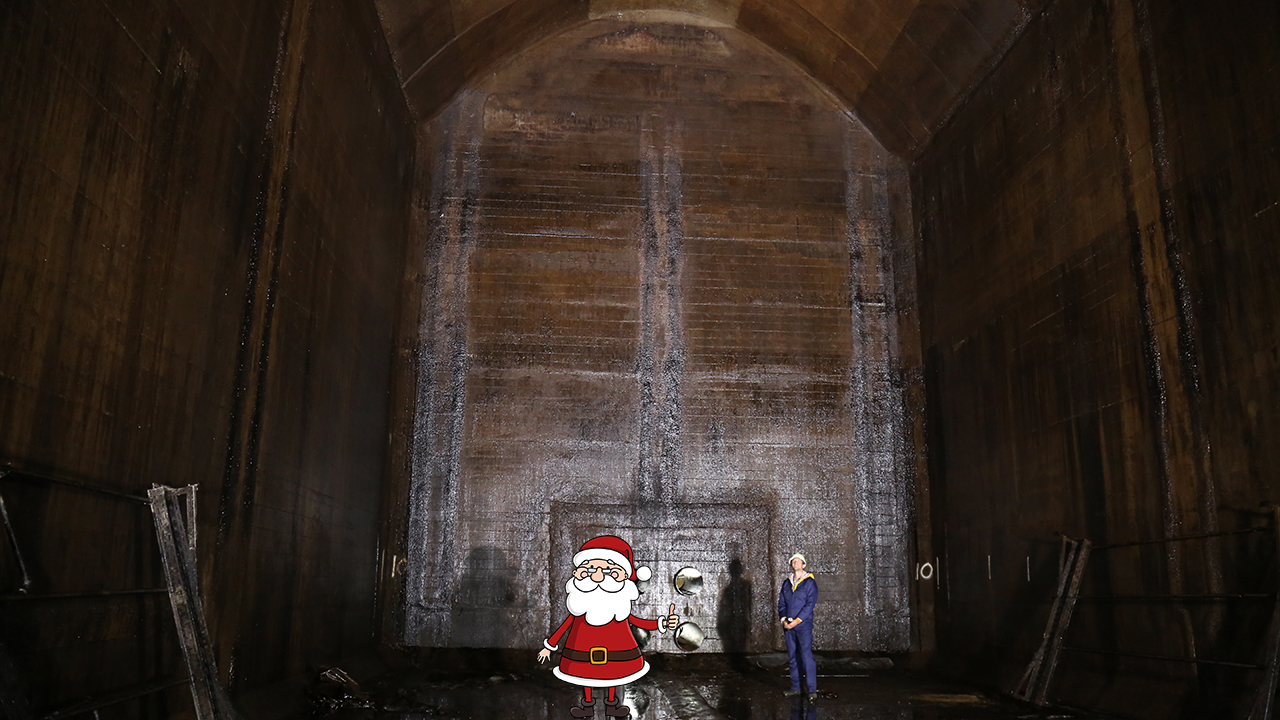To make the video “Santa does Architectural Acoustics” I used a process called auralisation to virtually place him into the oil tank that has the World record reverberation time. As you can see from the photo below, he would have been too plump to fit down the access pipes, which are behind him.

Auralisation is a way of creating a virtual rendition of a sound in a space. It is widely used in acoustical engineering. For example, before a grand concert hall is built, architects can listen to how music will sound in the space to help make decisions about the design. It is also the heart of convolution reverbs that are commonly used in music studios.
To get an auralisation you need two components. First of all you need a recording of Santa in a room with no-reflections. Hence you need to record the Ho Ho Ho in an anechoic chamber. The video starts with the dry sounding voice of Santa.
Next you need to characterise what would happen to Santa’s voice in the oil tank. You would get reflections from the walls, floor and ceiling. This effect is captured in an impulse response. You make a short sharp bang in the oil tank where Santa would stand and pick up the resulting sound on a microphone placed where the listener would be. The clip from SoundCloud below is the impulse response in Inchindown.
You then combine the dry recording of “ho ho ho” with the impulse response in a mathematical operation called convolution. This then magically transport Santa into Inchindown.
This was the first video used in @SalfordAcoustic 2018 #AcousticAdvent calendar.
Follow me
0 responses to “How Santa tested the acoustics in the Inchindown Oil Depot”
What is the oil tank made from and what are it dimensions?
This paper describes the tank and how the record was broken http://usir.salford.ac.uk/34538/1/A%20record%20%E2%80%9Clongest%20echo%E2%80%9D%20within%20the%20Inchindown%20oil.pdf
[…] More on how Santa’s voice get teleported to the Inchindown Oil Tank with the World Record reve… […]
[…] I think the Hamilton Mausoleum is best for this carol. You can read more on why we like reverb in this New Scientist article. Many theories in the article, and one is that the emotional impact of music increases the more listeners are surrounded by it. You can read more about places with extreme reverberation in Chapter 1 of Sonic Wonderland / The Sound Book. The video made using virtual auralisation. […]
Hi Trevor, I’d love to get hold of the Impulse Response file for this, have you made it available anywhere?
All the best,
Greg.
Uncompressed impulse responses https://freesound.org/people/acs272/packs/13598/
ah don’t worry, sorry, I tracked it down. Thanks for taking the time to record and especially to share the IR! Cheers!